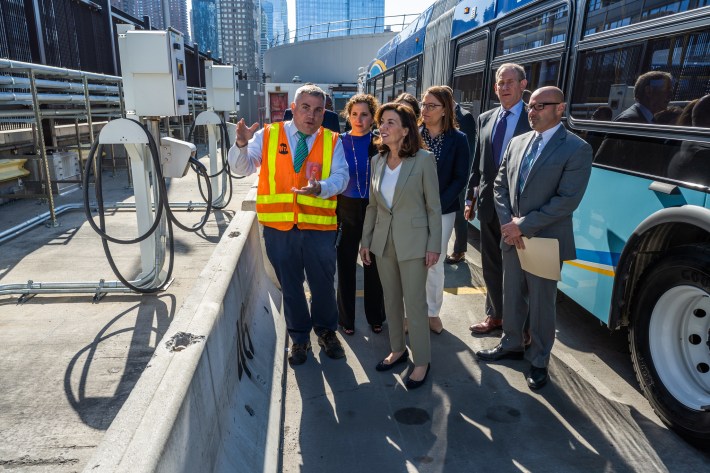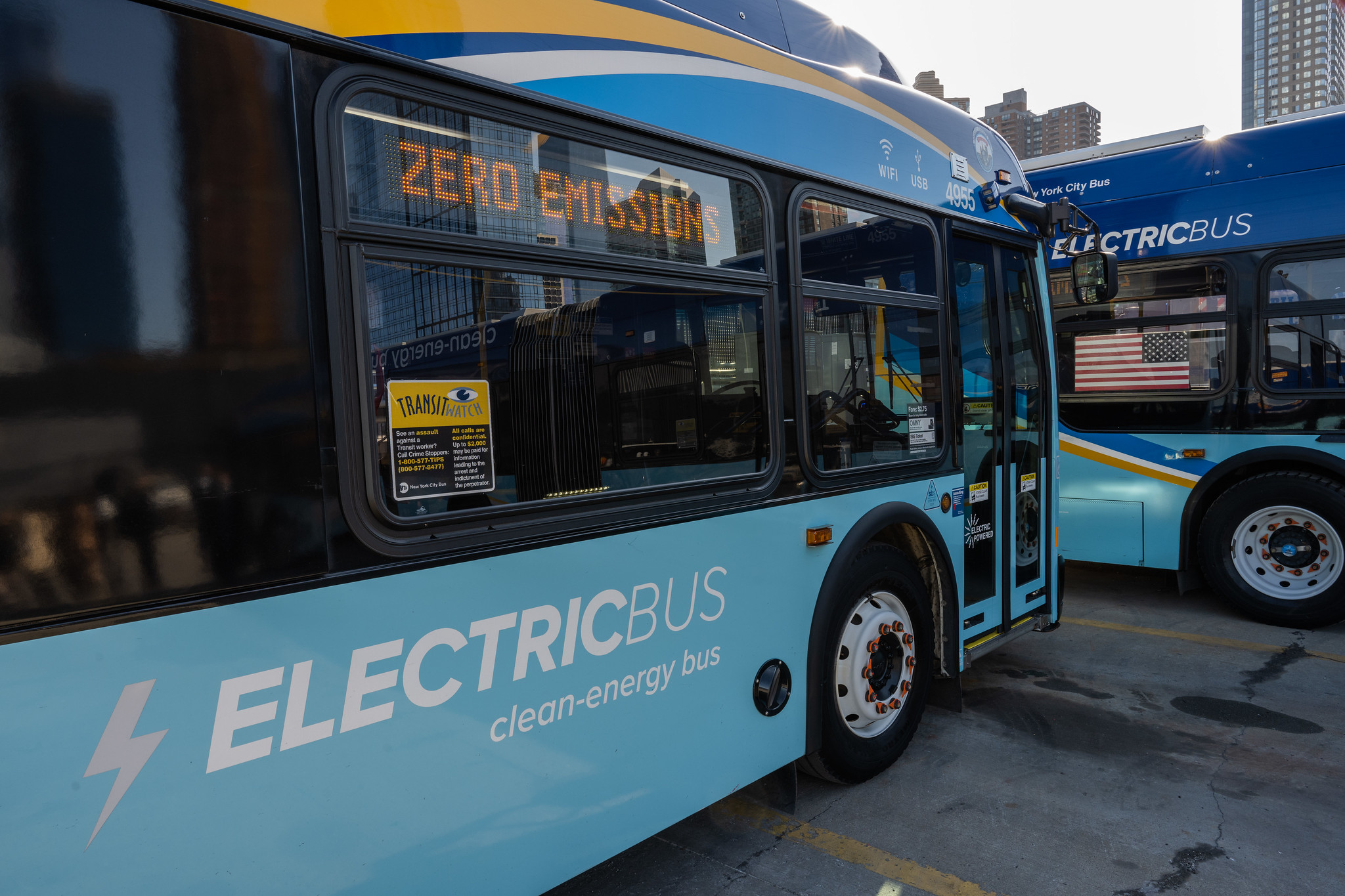Every little bit helps!
The Metropolitan Transportation Authority said today that it will add 60 electric buses to its 6,000-bus fleet by the end of the year, augmenting the 15 it now owns, in what it branded as an "Earth Day" announcement.
The authority will deploy the electric buses to six depots in all five boroughs in "environmental justice communities" with disproportionately high asthma rates, a function of pollution. The 15 authority-owned electric articulated buses now ply two routes: the M60 to LaGuardia Airport and the M14 along 14th Street. The MTA has leased a smattering of other electric buses for use in the outer boroughs. The six depots and the routes affected are:
- Grand Avenue, Queens: servicing the B24, B32, B39, B47, B48, B57, B60, B62, Q59
- Charleston, Staten Island: servicing the S55, S56, S74, S78, S84
- East New York, Brooklyn: servicing the B12, B14, B15, B17, B25, B42, B45, B65, B82, B83, B84, Q24, Q56
- Kingsbridge, Manhattan: servicing the Bx3, Bx7, Bx10, Bx13, Bx18, Bx20, M100
- Michael J. Quill depot, Manhattan: servicing the M8, M9, M12, M20, M21, M22, M42, M50, M55, M57, M66, M72
- Jamaica, Queens: servicing the Q3, Q4, Q5, Q17, Q30, Q42, Q77, Q84, Q85
"Mass transit is the antidote to climate change," MTA Chairman and CEO Janno Lieber said at a Midtown press conference, adding that transit avoids putting 17 million metric tons of greenhouse gases into the atmosphere annually (e.g., by keeping people out of cars). Transportation is the second-largest contributor of greenhouse-gas emissions in New York, after buildings.
The announcement is the latest step in the slow rollout of MTA bus electrification, which has been hampered by the fact that New York City pays some of the highest electrical rates in the nation. Even as cities around the world (see: Shenzhen, China) and in the United States go full-throttle toward the adoption of electric fleets, New York, with the nation's largest bus fleet, has lagged: Its electric buses still qualify as a "pilot" project. As recently as two years ago the MTA was paying more per bus mile for electricity than it did for fossil fuels.
In order to fully electrify the fleet and reach its target of zero emissions by 2040, the MTA needs a stable electricity supply and ample charging infrastructure — a tall order. But because the MTA isn’t the only player moving toward mass electrification, it constantly must negotiate rates.

Technical aspects of keeping buses charged also present a problem. The MTA may one day have to charge 300 buses at a time at depots, thus requiring more charging stations, and will need to install many low-power, overhead charging gantries along routes in order to allow the vehicles to complete their routes. The MTA said that, in order to support the new electric buses, it would add charging infrastructure at the Grand Avenue, Charleston, East New York, Jamaica, and Kingsbridge depots in the latter half of the year.
Thus, the authority's claim that today's announcement represents a "major step" toward its 2040 goal seems inflated, but the spread of several dozen electric buses around the city nonetheless was welcomed by a panoply of elected officials.
"Fully electrifying our bus fleet is a critical step forward to preserving our environment and protecting our families, and I am grateful to the MTA for its commitment to rolling out more electric buses in Queens this fall," Queens Borough President Donovan Richards said in a statement.
The MTA now deploys 1,300 hybrid gas-electric buses, 399 of which sometimes operate solely on electric power in an "EV mode." It pledges to purchase only electric buses by 2029. New York State budgeted $1.1 billion for buying 500 electric buses in the 2020-2024 capital plan.






